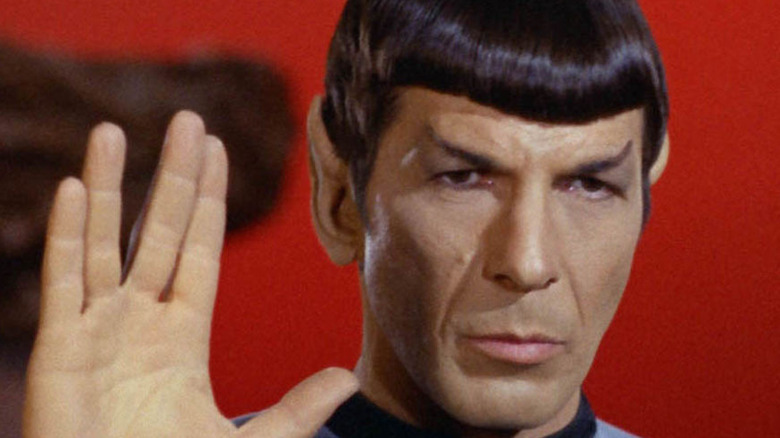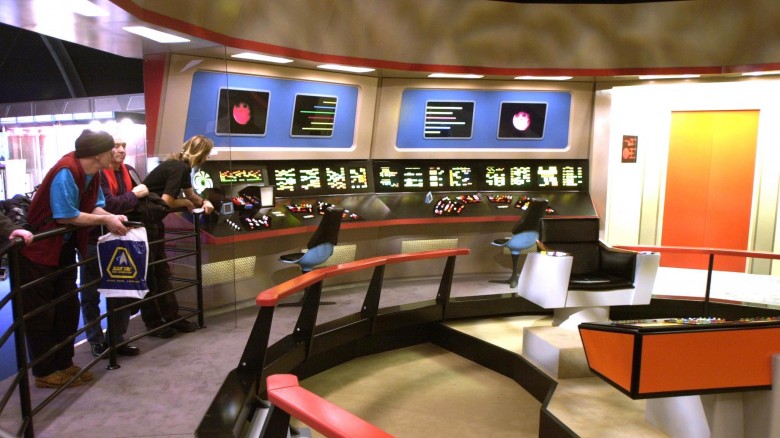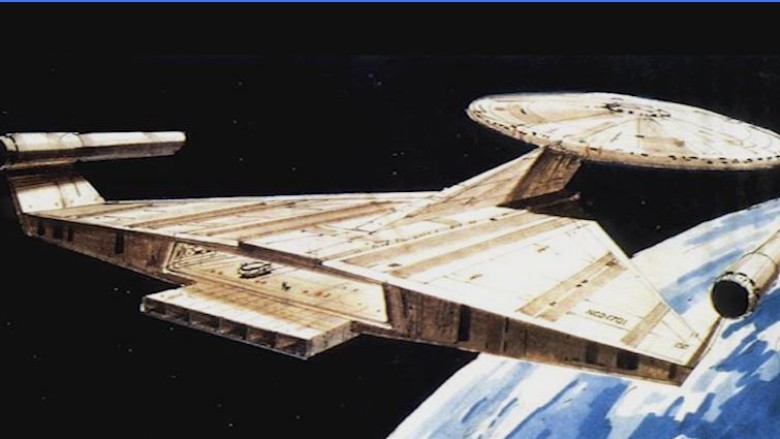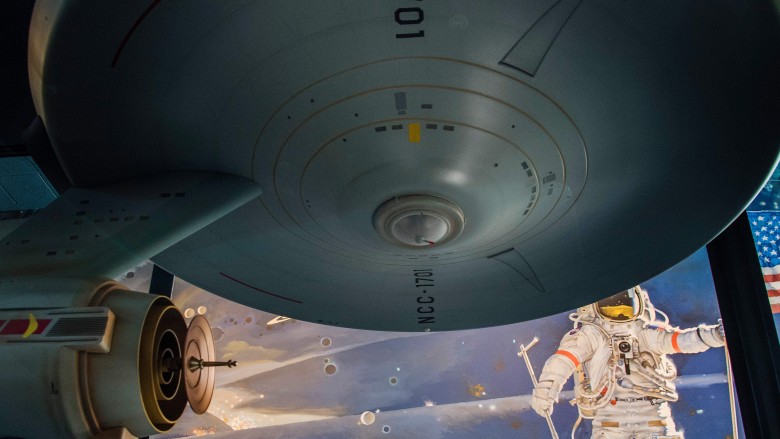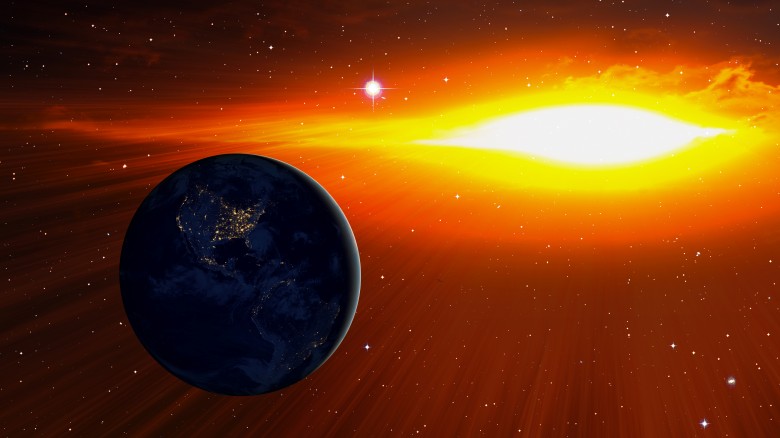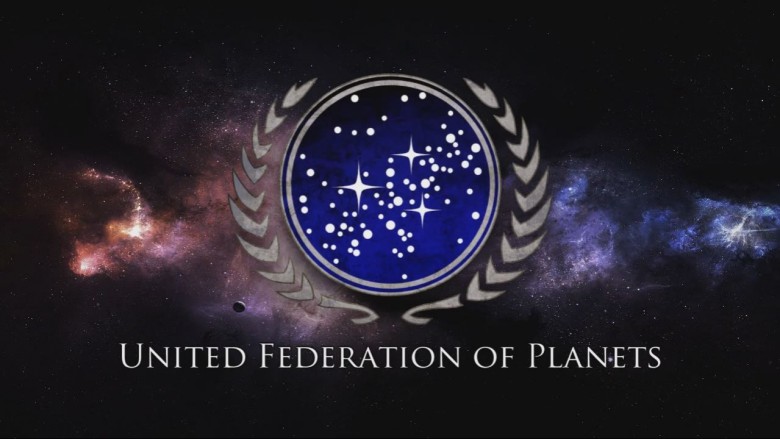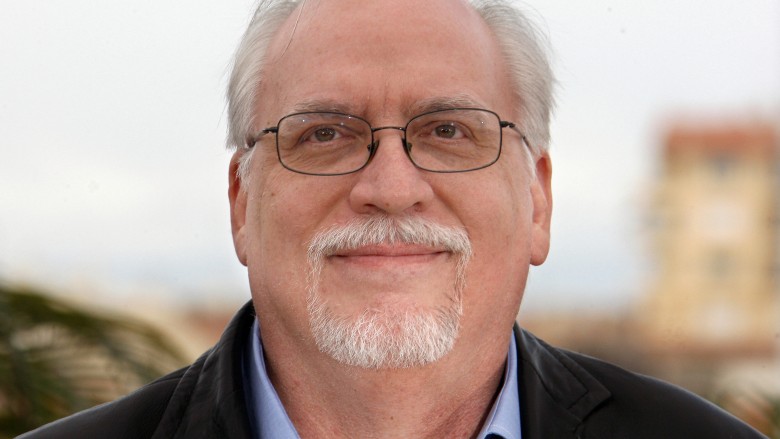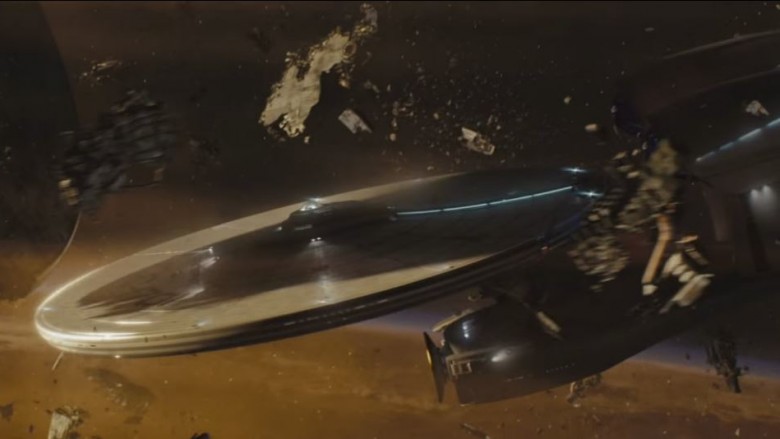Awesome Star Trek Concepts We Never Got To See
After 50 years, Star Trek writers and executives have had a lot of ideas, but most get red-shirted before they hit the airwaves. It's too bad, because some of them sounded really great. Here are awesome Star Trek concepts we never got to see.
Las Vegas Enterprise
The Las Vegas Strip has two segments: the trashy side in the city of Las Vegas, and the awesome side in the unincorporated pseudo-city of Paradise. The Vegas side doesn't pull in as many tourists, however, which hurts the gambling revenue. So in 1992, the city drew up an *ahem* enterprising plan. They would pull tourists away from the flashier casinos, with a full-size model of the Starship Enterprise.
Development company Goddard Group won the contract, and planned to spare no expense. The Enterprise would be built exactly to the fictional specifications of the TV show (omitting, unfortunately, the phasers and photon torpedoes), making it look like the old gal plopped down right in the middle of Las Vegas. Guests could tour the ship and witness faithful reproductions of the sets from the TV shows and movies. What's more: with no exterior supports (to keep the reproduction faithful) the ship was a minor engineering miracle, something that would have made even Scotty proud.
So what happened? Basically, Paramount killed the project for being too audacious. According to the Paramount CEO, if they made a bad movie everybody would forget about it in a year, but if this tourist trap didn't pan out, it'd be around forever. Evidently he'd never heard of demolitions, but that was the nail in the coffin. Vegas went with the less-spectacular Fremont Street Experience, which is just a dumb tunnel with lights. Millions of Star Trek fans cried more than they did when Spock died.
Star Trek: Planet of Titans
The original Star Trek went off the air in 1969, but that didn't stop America from falling in love with the show. Syndication blasted Star Trek reruns across the airwaves, turning the show into a cultural phenomenon. By 1975, the show was making so much money in syndication, Paramount bought movie rights and contacted Gene Roddenberry about making a film. With dollar signs flashing before his eyes, Roddenberry said yes.
Paramount went forward with a movie called Planet of Titans, but didn't decide on a single plot, or even a cohesive script. Most versions revolved around Kirk getting stranded on an alien world for three years. For some reason his crew just ... leaves him there, but eventually Spock decides to stop being a jerk, and rescue his captain. When the Enterprise shows up, they discover Klingons surrounding the planet, the enemy race having discovered this the home planet of the Titans, from Earth mythology. Hijinks ensue. Oh, and in some versions, Spock trips out with a Klingon and learns the secrets of sex. If that doesn't make you want to see the movie, what will?
Probably because of the Spock acid trip scenes, Paramount was hooked. Ralph McQuarrie (the concept artist for Star Wars) came on board and drew a redesigned Enterprise, which looked like the ship had a lovechild with a Star Destroyer. But in 1977, when everybody was ready for the movie to start, Paramount pulled the plug. Nobody knows why, though it might have had to do with Star Wars. Paramount knew the funding nightmare George Lucas had, and got worried there was no market for science fiction. Boy, they nailed that one. No market at all for sci-fi and space fiction. Not a lick.
Not all that pre-production work was lost, thankfully. McQuarrie's concept art got reused for Star Trek: Discovery, and Paramount eventually made Star Trek movies. Worse off were the screenwriters. For all their troublem they only got t-shirts with their feelings stenciled on the back: "F@#$ STAR TREK."
Assignment: Earth
Less than a year after Star Trek premiered, it was already in hot water. NBC was threatening to cancel the series and, although a huge letter-writing campaign by the sci-fi nerds was getting the executives' attention, Gene Roddenberry had no clue whether his show would survive. He started developing a new show called Assignment: Earth.
At first, Assignment: Earth had nothing to do with Star Trek. It told the story of Gary Seven, a time traveler who traveled to the past to make sure Earth history ran the way it was supposed to. Accompanied by a present-day secretary, a super-computer, and a shape-shifting cat, Seven would fight off evil aliens trying to mess up Earth history. Basically, it was Star Trek mixed with Doctor Who, a Comic Con wet dream.
The tides eventually turned for Star Trek, and Roddenberry soon realized he could only get the new show going if it was connected to Star Trek. He retooled the idea as a spin-off, making the dumb, dumb decision to use an episode of Star Trek as a launching off point for the spin-off. This ended up being the second season finale of Star Trek, ending the season as basically an advertisement for a different TV show, one barely featuring Spock and Kirk. To add salt to the wound, NBC passed on the series, making the lame crossover episode even lamer. Most illogical.
Star Trek: Phase II
After the fiasco of Planet of Titans, Paramount regrouped around a new Star Trek idea, this time focusing on getting the show back on TV. Paramount planned on launching a whole new network around the series, they were that confident Phase II would be a hit.
Right from the start, Paramount planned to give the show the budget it never had, with elaborate sets, new spaceships and cool uniforms. Thirteen episodes got written by some of the best sci-fi writers of the era, telling thrilling stories of robots, space civilizations, and time travel. It was the perfect reunion for the characters we loved, and plenty of new characters to fall for as well.
The problem was, well, the old cast. Shatner, being Shatner, demanded a huge paycheck. His fee was so high, Paramount didn't know if they could afford him for a whole series. They created a new character, Captain Will Decker, that could mysteriously replace Kirk if Shatner got too greedy. Meanwhile, Leonard Nimoy simply didn't know if he wanted to do more Trek, so a secondary Vulcan science officer was created just in case. An in-canon understudy, if you will.
Phase II was about to go on-screen, when Paramount made an insane decision (they're good at that). Out of nowhere they decided to make a movie instead, even though they had just cancelled their first Star Trek movie concept. The executives put all the money into the new movie, wrecking any hope for Phase II. Tons of elements and characters got reused for what became Star Trek: The Motion Picture, which itself was a production nightmare. It's a miracle Paramount finished any of their Star Trek ideas, to be frank.
Star Trek: Final Frontier
Since the '90s, fans have wanted to see what the Federation was like centuries after Picard helmed it. CBS never let us see it, opting instead to disappoint us with the prequel series, Star Trek: Discovery. Perhaps Star Trek: Picard will help. They almost gave us what we wanted in 2006, however, with the groundbreaking Star Trek: Final Frontier.
Instead of a traditional TV show, Final Frontier was a web-only series, with short animated episodes. But it wasn't some children's cartoon show — Final Frontier explored the dark future of the Federation. During a war with the Romulan Empire, centuries after Next Generation, mysterious explosions of Omega Particles rendered huge chunks of space impossible to travel via warp, essentially cutting the Federation in half. Anybody trapped in these regions of space would take hundreds of years to travel anywhere else, stranding starships in vast nothingness and with viewers never feeling joy. Ever. The political instability forced the Vulcans to leave the Federation, destroyed the Andorians, and allowed the Romulans to occupy the Klingons. That doesn't sound like standard peace-loving Star Trek to us.
CBS wanted to face real issues head-on, creating a show that paralleled the global upheavals following 9/11. They created what was basically "Battlestar Galactica meets Star Trek and gets a big ol' case of the sads," complete with a stranded and run-down Enterprise. CBS slowly lost interest in the show, which is probably for the better. Most people don't want to think about the Twin Towers when they watch Star Trek, and had it continued, somebody likely would have written in space-bin Laden.
However, we were intrigued, so we did some digging and found out that the proposed storyboards are online, and they're actually really good! Not a space-Osama in sight. Let's keep it that way.
Star Trek: Federation
When Star Trek: Enterprise (also known as Star Trek: The One That No One Watched) got the ax in 2005, Star Trek looked dead on TV. Enterprise hemorrhaged viewers during its run, and after the movie Nemesis got demolished in the box office, CBS and Paramount were looking for anything to get viewers re-interested in the franchise.
Enter Bryan Singer. The acclaimed director was hot off his success with the X-Men franchise, and turned his sights to the stars. He wanted to update Star Trek for the modern TV audience, letting the show have long serialized arcs, and a darker tone. His idea, Star Trek: Federation, was one of the most ambitious Star Trek ideas ever. Taking place in the year 3000, Federation featured a United Federation of Planets that had become complacent and stopped exploring, a Klingon empire turning into a mystical religious order, and the Ferengi becoming the dominant galactic superpower. In this peaceful future, the galaxy is attacked by a new enemy from unknown space named The Scourge. A new Enterprise, commanded by James Kirk's descendant, Alexander, is sent out to stop the threat from destroying the fragile peace of the galaxy.
Federation had all the bells and whistles of Star Trek: new aliens, new ships, and excellent writers signing on-board. But J.J. Abrams inadvertently killed it, as his ideas for a rebooted movie franchise won over the executives. Thus, Singer and company decided to drop their idea before officially pitching it. Too bad — we'd personally rather watch the stories of Alexander Kirk than nu-James Kirk.
J. Michael Straczynski's Star Trek
Back in the early '90s, there were two sci-fi TV shows about a space station in the middle of an interstellar war: J. Michael Straczynski's Babylon 5 and the totally not a copy at all (CBS told us to say that) Star Trek show Deep Space Nine. JMS tried to sue CBS for how similar DS9 was to his show — when the lawsuit failed, JMS had a crazy idea. If you can't beat 'em, join 'em.
Fast-forward to 2004. The much-maligned Enterprise was barely surviving on TV. Babylon 5 had ended. With nothing else to do, JMS embarked on a quest to save his old rival. But instead of doing a totally new series, he wanted to do a reboot of the original series. According to JMS, Star Trek had become too commonplace, and he wanted to shake it up.
Instead of going with total serialization, or only stand-alone episodes, JMS wanted to take the X-Files approach. Every episode could stand alone, but in the background, there would be a secondary storyline, developing mysteries over multiple episodes. The show would take place at the start of the Five Year Mission, showing how a young (and shockingly incompetent) Kirk got command of the Enterprise, and how the original crew got together. JMS wanted to show what the Enterprise would be like with a young, dumb crew manning her helm.
It's an awesome idea, one that would've given Star Trek much-needed life, but CBS and Paramount felt it was too risky. Then, two years later, they turned around and signed off on J.J. Abram's reboot, because when you fear risk, doing the same thing you already did is way easier to swallow. Who knows what else went on behind the scenes, but it really seems like Star Trek is out to get JMS.
Star Trek: The Beginning
If these projects have taught us anything, it's that Paramount really wanted a dark, violent Star Trek. Before J.J. Abrams stepped on scene with his rebooted franchise, Paramount was looking at developing Star Trek: The Beginning, a movie set in the prime universe, complete with Holocaust and 9/11 allegories.
The Beginning took place during the Earth-Romulan War, decades before Kirk and Spock blasted off. The Romulans conduct a gigantic sneak attack on Earth, demanding all Vulcans are turned over to Romulan extermination camps. Get it? Like the Nazis. The United Federation of Planets sends Tiberius Chase — a hotshot pilot and ancestor to Kirk — out on a secret war against the Romulan fleet.
The script sounds normal enough, but it had some insane elements. For example, Tiberius's family are a bunch of xenophobes living in Antarctica — snow racists, basically. Paramount also decided to really play up the World War II tone, complete with the obvious Holocaust parallels. With Tiberius conducting a guerrilla war against the Romulans, it seems like this was a mixture of Inglourious Basterds and Star Trek, which actually sounds ridiculously awesome.
Paramount, however, like the eternal destroyers of fun they are, decided The Beginning was simply too dark. Basically, they wanted dark until they got dark, then they ran toward the safety of old characters and lens flare for days. We will, tragically, never see Tiberius Chase get into the business of killin' Romulans. Business is a-boomin'!
